|
Since its capture during the autumn of 1940, there has never been reason to question the specific type of “White 4”, an E-series Messerschmitt Bf109, Werk Nr.1190 which served with II./JG26. On closer inspection of all available facts and the subsequent return of the airframe to the UK for restoration, the full story surrounding its past and most importantly confirmation of its exact type, can now be established.
|
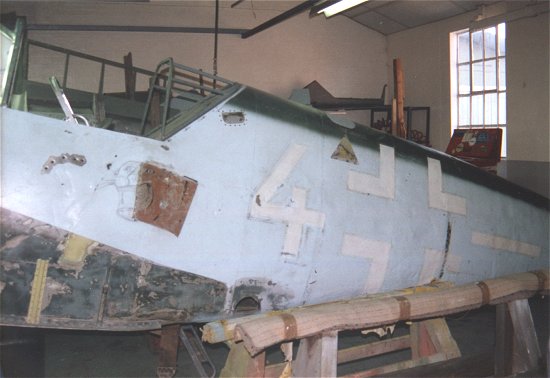
|
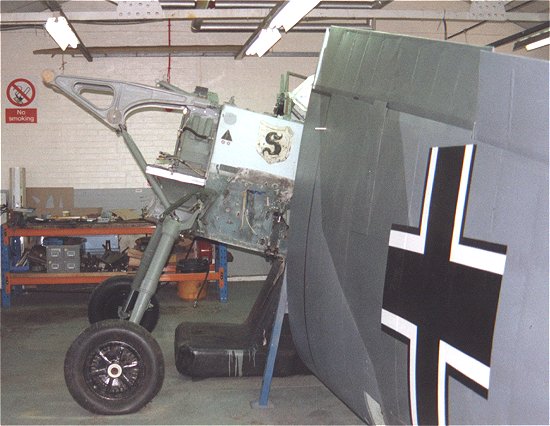
|
The airframe identification plate on the surviving airframe shows manufacture by Erla Maschinewerk at Leipzig on 18th September 1939. Clearly stamped on the surviving port undercarriage mounting plate is "109.21-08/E3 S.44.55065 WN.r.1190”
and this points to the airframe being a Bf109E-3. The Daimler-Benz DB601 engine fitted to the airframe at its time of capture was removed and subsequently lost whilst in Canadian storage. This means exact confirmation of the engine type and E-series variant rely solely on other cosmetic features both on the aircraft itself and on reports and photographs taken at its time of capture. Close inspection of the surviving airframe on its return to the UK seems to further confirm the E-3 theory. Despite it being difficult to read, the figure 87 can just be seen within the fuselage fuel triangle. This corresponds with the 87-octane fuel used by a DB601 A powered E-3. If this were all the evidence available, then one could quite easily assume that it remained an E-3 throughout its service with JG 26. However, official documentation exists which calls into question its true designation at time of capture. Photographic evidence from reliable archive sources in the United States, plus an Allied Intelligence Report (AIR) written after inspection at the crash scene, make the general assumption that the aircraft remained an E-3 less certain. The official on-site AIR report stated that:
"Airframe built by Erla. Parts by Wesser Flugzeugbau Works No.1190 date 18.9.39. Engine: DB601A made by Daimler-Benz No.11954. Armament: two 20-mm cannons, two MG 17's. Armour: normal cross bulkhead and pilot's head shield and canopy. 100-octane mark in triangle marked on fuselage."
|
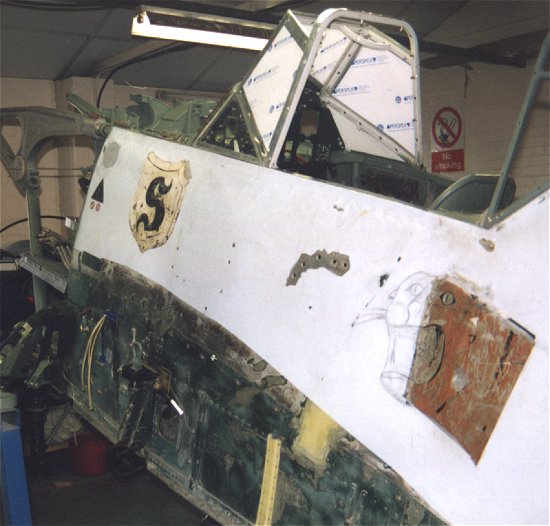
|
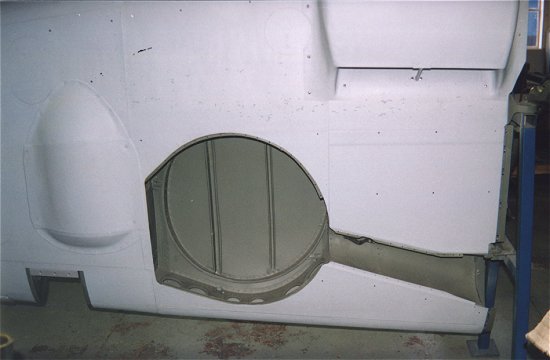
|
Lets look in turn at each of these reported features. The comments concerning armament, full seat armour and armoured glass by themselves set this aircraft apart from a basic E-3 variant. The head shield could easily have been retrofitted to an E-3 (and any surviving E-1's) with a field conversion kit. Its subsequent loss from W.Nr.1190 has almost certainly added to the subsequent confusion. It should be noted that American fighter aircraft of the period did not offer similar protection to their pilots. Consequently either the British or the Americans, to prevent any embarrassment arising from its public display with the armour, could have easily removed it. The most important part of the AIR report is its mention of a 100-octane fuel triangle, the significance of which should not be understated. This fuel triangle is clearly visible above the main fuselage Balkenkreuz on official military archive photographs taken of the airframe whilst on tour in Canada and the United States. Mention on the AIR report that the powerplant was a DB601A can be dismissed as on-site inspection of the aircraft would not have been particularly detailed and the technical designations are likely to have been taken directly from the port undercarriage plate. Therefore, given the evidence before him at the time of inspection, the AIR reporter has likely made the incorrect assumption that this was a standard Bf109E-3.
|
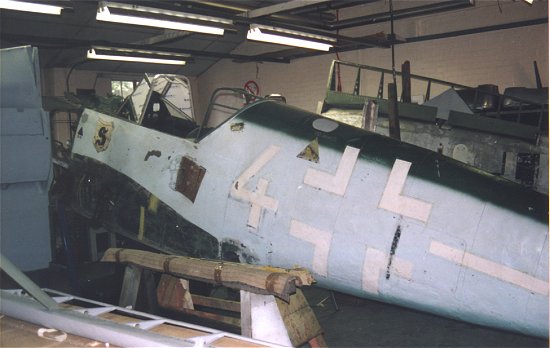
|
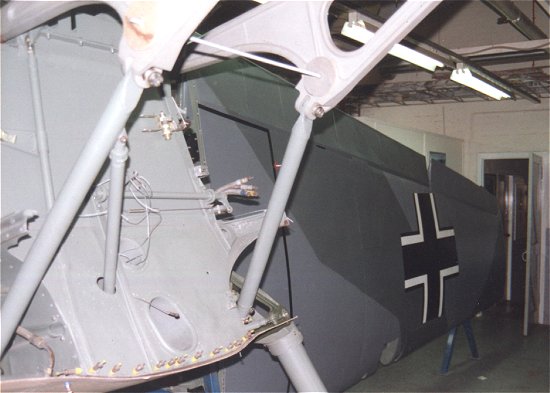
|
By mid-1940 the new Daimler-Benz DB601N had been developed and was beginning to replace the older and less powerful DB601A. Externally, both engines were identical; the only distinguishing mark was the letter N cast into the top of the DB601N engine casing. Unlike its predecessor, which had concave piston heads, the DB601N was developed with flattened heads to increase engine compression. The DB601A produced 1175hp for take-off at 2480rpm with a maximum output of 1020hp at 2400rpm at 14675ft. In comparison, the DB601N provided 1200hp for take-off at 2600rpm with full boost available for 1 minute, plus a maximum emergency output of 1270hp for a similar period at 16400ft. This improved performance necessitated the use of a higher 100-octane fuel as opposed to the 87-octane required by the DB601A. Consequently, to ensure correct filling a “field upgrade” would necessitate the over-painting of the old 87-octane triangle with the new 100-octane triangle. The previously mentioned photographic evidence therefore provides incontrovertible evidence that W.Nr.1190 had been fitted with a DB601N at the time of capture and that its original identification plate was no longer valid. The 87 visible today can only have come from either recent over-painting or removal of the 100 to reveal a previously applied 87. Given this and the archive photographic evidence available, I consider it safe to assume the correct designation to be Bf109E-4/N.
|
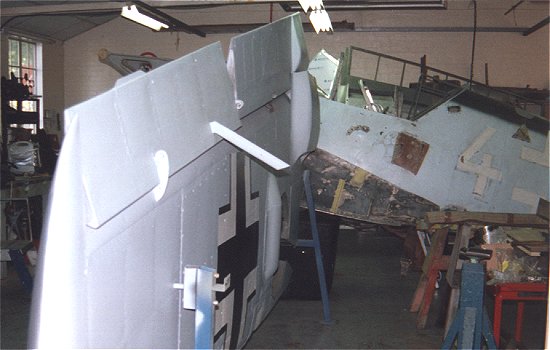
|
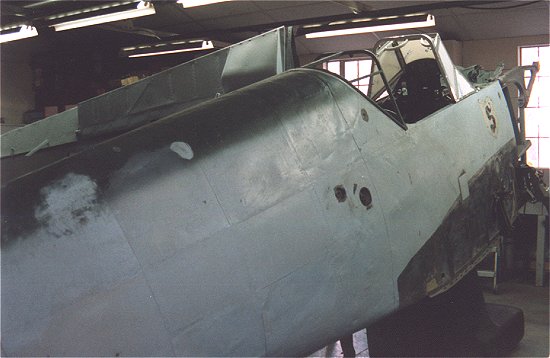
|
|
|
|
The colour scheme in which W.Nr.1190 was finished is also open to conjecture. JG26 were particularly strict when adhering to Reichsiuftfahrtministerium (RLM) directives concerning camouflage issues and had entered the Battle of Britain with all aircraft wearing 71/02/65 (Dark Green/RLM Grey/Light Blue). During mid-1940 subtle changes to this scheme were being introduced with the addition of a grey 02-mottle effect to the fuselage. By December, a new 74/75/76 (Dark Green/Medium Grey/Light Grey-blue) scheme began appearing on aircraft then entering service with the Geschwader. Careful research on paint samples taken from the surviving fuselage establishes that these new colours had already been applied, even though this does not tie in with the widely held belief that 74/75/76 had been introduced after W.Nr.1190's capture. However, it was not impossible for some aircraft at this time to be wearing this new revised scheme, with or without fuselage mottling, as part of effectiveness testing prior to its full introduction. Alternatively, this could be a result of a previous half-hearted attempt at restoration. RLM Yellow, either 27 or 04, was applied to the spinner, engine cowling and rudder as an aid to quick identification in combat. The well-known "Schlageter" emblem was featured on either side of the fuselage, beneath and forward of the cockpit canopy, in exactly the position specified in an earlier RLM directive. At some stage after Ebbighausen was shot down a yellow, red, black and white 4th
Staffel tiger's head emblem was painted on the port side below the rear of the cockpit. This Staffel emblem was conceived and designed by Ebbighausen and was exclusive to aircraft of 4thStaffel. Standard Winkel-Drieck insignia appropriate to his position as Gruppenkommandeur were also applied. Finally, Ebbighausen’s five victory markings had been added to the aircraft’s fin. These fire were:
13/05/40 - Dutch Fokker TV near Dordrecht
13/05/40 - Dutch Fokker G1 near Dordrecht
18/05/40 - French Morane MS.406 near Douai
24/05/40 - RAF Spitfire near Dunkirchen
14/06/40 - RAF Fairey Battle 18km south of Vernon
|
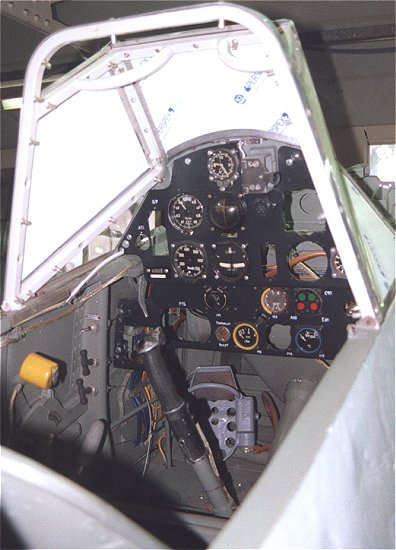
|
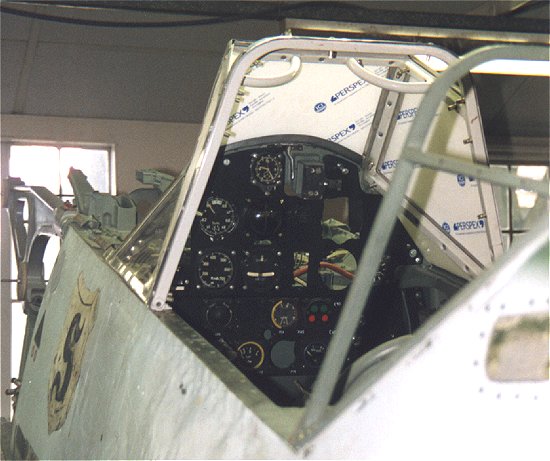
|
|
|
|
W.Nr.1190 was delivered to II./JG26 at their Marquise-Est base in France around mid-1940. With its addition into Gruppe service Gruppenkommandeur Karl Ebbighausen, as befitting his position, may well have been allocated a second aircraft in the unlikely event that one should be unserviceable. Prior to his change of rank, Staffelkapitaen Ebbighausen had flown a Bf109E-3 since its introduction into service with II./JG26 in mid-May, after which modification to an E-4 would have been undertaken as part of the general upgrade of all E-3 Geschwader aircraft. He was then made interim II Gruppenkommandeur from 20th
May 1940 until 31st
May 1940 whilst the Gruppe awaited a permanent replacement for its previous Kommandeur who had been killed in action. After reverting back to 4th
Staffel Kapitaen, the death of his replacement Hauptmann Erich Noack saw him accept the position of II Gruppenkommandeur on a permanent basis from 25th July 1940.
On August 16th
Ebbighausen led his Second Gruppe from Marquise-Est for a freie Jagd (free fight or fighter sweep without ground control) over Dover and Folkestone in a Bf109E-4. At 1400hrs 10km South East of Dover a savage dogfight ensued between Ebbighausen's Gruppe and RAF Spitfires of No.266 Squadron. Reinforced with Bf109E’s from an unidentified Staffel, six Spitfires were shot down for the loss of just one Bf109E. However, during the ensuing battle, Ebbighausen's absence had gone unnoticed. In the event, no trace of him or his E-4 was ever found.
Back at Marquise-Est, W.Nr1190 remained ready for use. At some point prior to September 30th
the command insignia were over-painted and the aircraft assigned to the 4th Staffel as "White 4". Ebbighausen's five kill markings were left untouched, possibly due to lack of time. During September a 22-year-old non-commissioned officer Horst Perez was stationed with the unit and the recently re-designated "White 4" made available for his use. On 30th
September, Uffz. Perez took off from Marquise-Est in "White 4" for a freie Jagd mission over Southern England. According to W.G.Ramsey in his recent study "The Blitz", a RAF Spitfire, piloted by Sgt. Kingaby of No.92 Squadron bounced Perez. After taking several hits to the fuselage section around the cockpit and the port wing, he was forced to make an emergency belly-landing in a field near the village of Eastdean in Sussex. Damage to the aircraft was superficial and after on-site inspection it was decided to transport the aircraft to the Royal Aircraft Establishment at Farnborough for further assessment.
On exiting the aircraft, Perez was shot and was wounded in the hand and jaw before being taken as a Prisoner of War (POW). During later interrogation he confirmed to his captives that he had only been stationed in France for a short time but had been making at least one sortie daily, weather permitting. He also enquired after a number of friends, one was known to belong to 4./JG26 and two others were from I./LG2. Later he was shipped to a Canadian POW camp where he remained until 1945. His post-war activities are unknown.
|
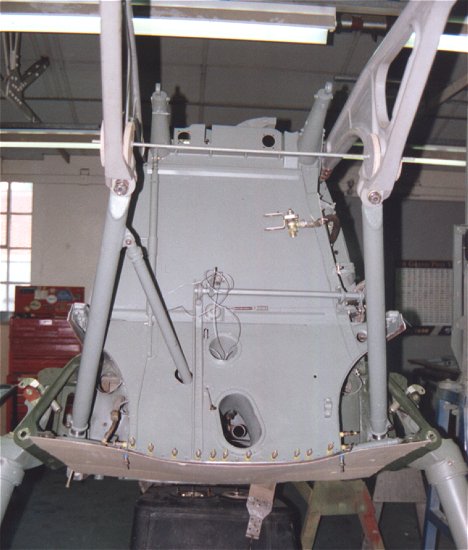
|
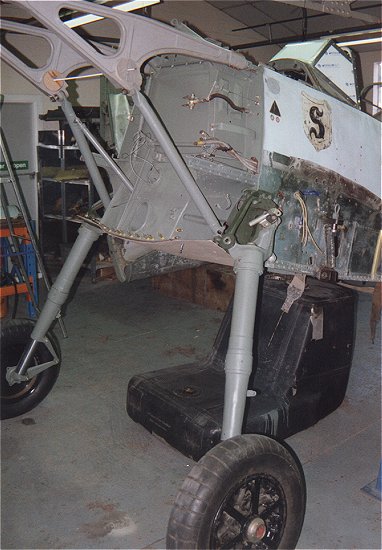
|
|
|
|
After a brief stay at the RAE, the decision was made to make W.Nr.1190 available to tour Canada and America as part of the Bundles for Britain campaign. It was expected that this tour would raise awareness and welfare donations for the civilian population in Britain during their stand against the Germans. American and Canadian civilians donated money for the right to view the aircraft as well as to scratch their name into the fuselage. It arrived in Nova Scotia from Britain early in 1941and was transported by rail to New York for display there in June of the same year. At the end of the war R was delivered back to the Canadians at the Amprior Research Establishment in Ontario to be put into indefinite storage. After being examined by Canadian War Museum personnel, who considered it beyond repair, it was purchased by British enthusiasts in 1961 and returned to the United Kingdom. After a long period in storage and several failed attempts to start restoration it was purchased by the Imperial War Museum (IWM) in 1997 with the financial assistance of the National Heritage Memorial Fund. The Aircraft Restoration Company (ARCO) was awarded the restoration contract. After much discussion, it was decided that only the port half of the fighter is to be restored to 1940 vintage. The starboard side would remain in its current condition complete with the markings and graffiti acquired during its wartime tour of the US and Canada. Minor repair work to this side and a coat of varnish was applied to protect it from the infamous English weather. Some of the major wing components including the flaps and ailerons were manufactured by ARCO from scratch. Flugwerks in Germany manufactured the complete tail assemblies, except the horizontal stabilisers. The finished restoration was unveiled in a diorama setting at the Imperial war Museum at Duxford on 17th
March 1998 where she can still be found today.
©Peter
Evans
For more details regarding JG26 visit the excellent and highly informative Jagdgeschwader 26, "Schlageter" Homepage online at http://jg26.vze.com/ from where details of Don Caldwell's authoritative books on JG 26 can be found. Special thanks to the following: Donald Caldwell and Les Butler for archive photographs and information concerning JG26, Colin Swann at ARCO for supplying information on the restoration, Stephen M. Fochuk, Mark Sheppard and the members of the Luftwaffe Experten Message Board for all their help and assistance. If you have any additional missing information regarding any aspect of this aircraft and its history, please write to the author c/o
the Webmaster.
We
thank Peter for his valuable contribution to the website.
Peter owns the 'Luftwaffe Experten Message Board'
|

